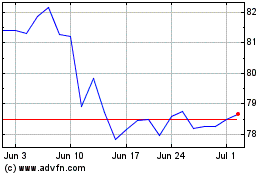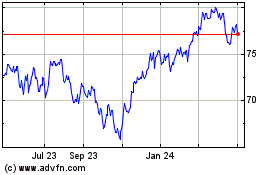The ETF industry has come a long way from the time when the ETFs
were first launched as investment tools to gain exposure to
different asset classes. Since then, many ETFs came into existence,
of which many could not survive in the industry and had to be shut
down. So what could be the possible reason behind those ETFs which
were launched only to be shut down later?
We can say that ETFs are more about numbers like AUM, volume,
number of holdings, etc. So, which one of these numbers keeps an
ETF going? Is it asset under management which indicates whether the
fund will continue to exist or its average daily volume? (Ten
Biggest U.S. Equity Market ETFs)
Undoubtedly volume is an important consideration in the
investment process, especially for traders who get in and out of a
particular security very frequently. For these traders, high volume
levels can help keep bid-ask spreads low and thus reduce the total
cost of trading. (Guide to the 25 Most Liquid ETFs)
But it should be noted that a fund’s very existence depends to a
large extent on its asset under management. Generally, for a fund
asset under management of or over $100 million work as a threshold
for any sponsor’s profitability. While big fund houses may be able
to run their ETFs with low AUM for years, it becomes really
difficult for small fund house.
Although AUM and volume both play crucial roles in any fund’s
existence, it is finally the return from the fund which influences
any investor’s decision. Still, the funds that have managed to
attract a large amount of assets indicate that they are popular
with the investors due to their past performance and expectations
for future performance. Investors looking to invest in ETFs with
very high AUMs (more than 30 billion) as criteria have the
following options available.
SPDR S&P 500
(SPY)
Initiated in January 1993, SPY is the king in the ETF world,
with the highest asset under management. It manages an asset base
of $118.4 billion. The most popular fund among investors, SPY seeks
to invest its heavy asset base in a basket of 500 stocks and trades
with an average trading volume of about 135 million shares. The
fund also has an edge in expenses as it charges a fee of just 0.09%
annually. (Guide to the 25 Cheapest ETFs)
The weighting towards the top 10 holdings is also moderate as
just 21.4% of the huge asset base goes towards them. This implies
that the fund’s asset allocation is not limited to the top 10
holdings but is spread out among other companies as well.
Apple Inc. (AAPL) takes the top position in the top 10
holdings list with an asset allocation of 4.9%. Among others, the
fund does not invest more than 3.3% in any one holding.
Among sector allocation, the fund gives double-digit allocation
to the top 5 sectors with information technology being the most
preferred sector in the list with an asset allocation of 20.1%.
Vanguard MSCI Emerging Markets ETF (VWO)
This Vanguard ETF looks to tap the growing emerging markets
which not only have greater growth potential but also lower
correlation with their developed market counterparts. (Three
Overlooked Emerging Market ETFs)
This ETF tracks the MSCI Emerging Markets Index in order to
provide exposure to a basket of stocks across various developing
nations. The product has proven to be extremely popular with
investors.
The proof is in the $67.1 billion under management in the fund,
while trading volume is more than 18 million shares a day. Also,
the cost appears to be minimal at 20 basis points, especially when
compared to other emerging market ETFs.
In terms of a portfolio, VWO provides access to 902 securities
in its basket and does not allocate more than 3.9% to any one
stock. This suggests that the product is well diversified from an
individual security perspective and is unlikely to face company
specific risk. (Three Emerging Market ETFs to Limit BRIC
Exposure)
With regard to country exposure, China takes the top spot at
17.3% of assets, followed by 14.4% in Korea, 15.2% in Brazil, and a
10.7% allocation to Taiwan.
SPDR Gold Shares
(GLD)
For a bullion-backed approach to gold ETF investing, investors
can look to SPDR Gold Shares. GLD is the ETF which is backed by
physical metal and holds the metal in the form of bullion or
ingots.
Investing through GLD in gold represents a cost-effective and
suitable mode for investors. It is expected that the transaction
costs for buying and selling the shares will be lower than
purchasing, storing and insuring physical gold for most investors
(Has The Junior Gold Mining ETF Lost Its Luster?).
This ETF is designed to track the spot price of Gold bullion.
GLD is an ETF rich in AUM as it has $75.9 billion asset under
management and is one of the most liquid options available in gold
ETF investing trading with volumes of 7 million a day. The fund
charges a fee of 40 basis points annually.
iShares MSCI EAFE Index Fund ETF
(EFA)
For investors seeking a broad exposure to developed markets
around the world outside of the U.S. and Canada should invest in
EFA. EFA tracks the MSCI EAFE Index and provides exposure to
companies specifically in Europe, Australia, and the Far East
(Seven Biggest International Equity ETFs).
This product manages an asset base of $36.7 billion and is an
extremely liquid option available to investors as traded volume on
a normal day is more than 14 million. So this product is rich in
both AUM and volume.
The fund seeks to invest this asset base in a large basket of
926 stocks and is immune to company specific risk with just 13.4%
of assets in the top 10 holdings. Among sector breakdown, the fund
is a bit tilted towards financials in which it put in 23.4% of the
asset base. Among others the fund does not invest more than 12.3%
in any stock.
From a country perspective, United Kingdom takes the top spot at
22.8% of assets, just edging out Japan. The fund charges an expense
ratio of 34 basis points on an annual basis.
MSCI Emerging Markets Index Fund
(EEM)
For a broad play on the emerging market space, EEM presents a
compelling choice to the investors looking to tap the emerging
markets (Get True Emerging Market Exposure With These Three
ETFs).
The fund managed to build an impressive asset base of $37.4
billion and is also rich in volume trading with volumes of more
than 36 million on a normal day. The ETF charges investors 67 basis
points in fees for its services. .
It represents a solid pick for long-term investors as it has a
well diversified portfolio that doesn’t put more than 3.8% in any
one security. Sector exposure, however, is tilted towards
financials, information technology, energy and materials where each
of them accounts for double-digit allocation.
For countries, China takes the top spot at just about 17% of the
total, followed by a 15% allocation to South Korea and a 13%
holding in Brazilian firms.
iShares S&P 500 Index Fund
(IVV)
Investors seeking for exposure in the large capitalization
sector of the U.S. equity market or S&P 500 should look to
invest in IVV. IVV trades with an asset base of $32.8 billion.
This produces a product which is home to a large basket of 502
large cap stocks with a spread out holding pattern as it just
allocates 21.3% to the top 10 holdings. Apple takes the top spot in
the top 10 holdings closely followed by Exxon Mobil and General
Electric.
The fund does not appear to be biased towards any particular
sector and gives double-digit allocation to almost all the sectors
except the last four. The fund also has an edge in expenses as it
just charges 9 basis points annually.
Want the latest recommendations from Zacks Investment Research?
Today, you can download 7 Best Stocks for the Next 30
Days. Click to get this free report
>>
ISHARS-EMG MKT (EEM): ETF Research Reports
ISHARS-EAFE (EFA): ETF Research Reports
SPDR-GOLD TRUST (GLD): ETF Research Reports
ISHARS-SP500 (IVV): ETF Research Reports
SPDR-SP 500 TR (SPY): ETF Research Reports
VIPERS-M EM MKT (VWO): ETF Research Reports
To read this article on Zacks.com click here.
iShares MSCI EAFE (AMEX:EFA)
Historical Stock Chart
From Mar 2024 to Apr 2024

iShares MSCI EAFE (AMEX:EFA)
Historical Stock Chart
From Apr 2023 to Apr 2024
